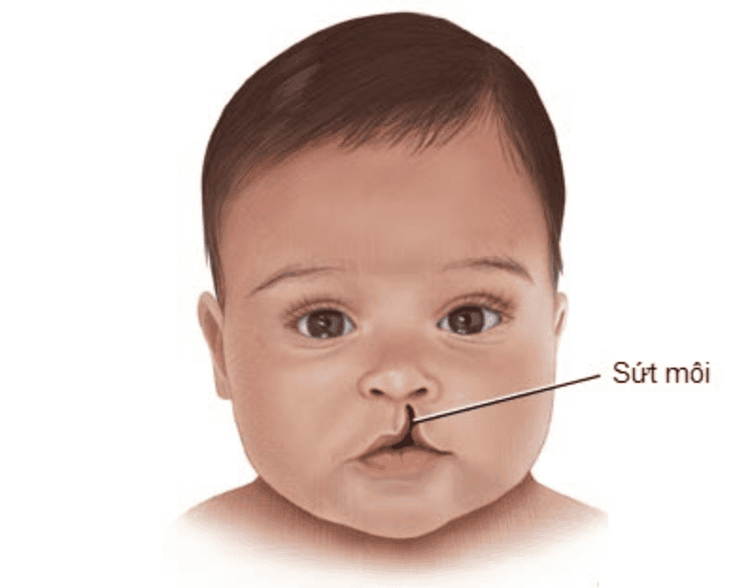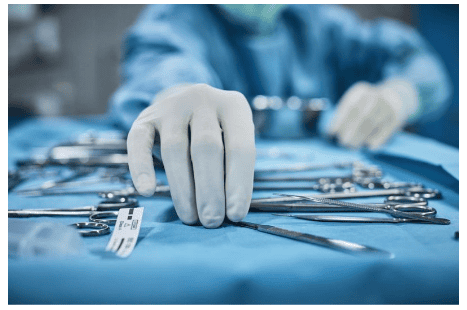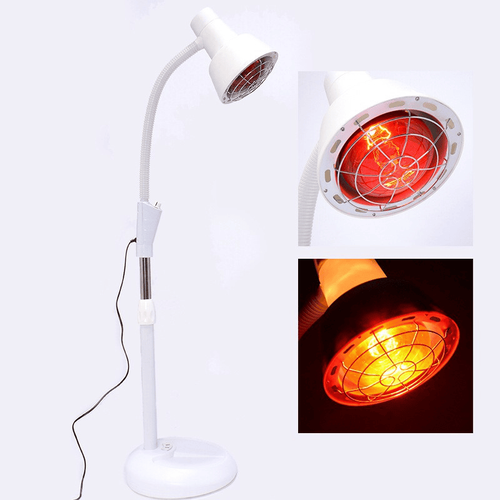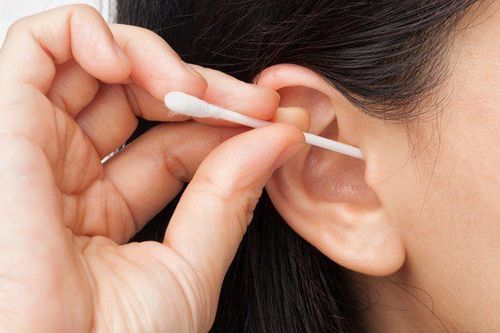This article was professionally consulted by Dr. Duong Van Sy - Pediatrician - Neonatologist - Vinmec Hai Phong International General Hospital
Stickler syndrome is a group of genetic conditions characterized by a distinctive facial appearance, eye abnormalities, hearing loss, and joint problems. A characteristic feature of Stickler syndrome is a slightly flattened face. This appearance is due to underdeveloped bones in the midface, including the cheekbones and bridge of the nose. A specific group of physical features called Pierre Robin syndrome is also common in people with Stickler syndrome. Problems with the bones of the spine can also occur, including abnormal curvature of the spine (scoliosis) and flattened vertebrae (spondylosis). Researchers have described several types of Stickler syndrome, distinguished by their genetic cause, signs, and symptoms. In this article, we will provide useful information to better understand Stickler syndrome.
1. What is Stickler syndrome?
Stickler syndrome is a genetic disorder that can cause serious problems with vision, hearing, and joints. Also known as hereditary progressive ophthalmo-arthropathy, Stickler syndrome is usually diagnosed in infancy or early childhood.
Children with Stickler syndrome often have distinctive facial features such as bulging eyes, a small, flat nose, an upturned face, and a receding chin. Children are often born with a cleft palate (cleft palate).
Although there is no cure for Stickler syndrome, treatments can help control symptoms and prevent complications. In some cases, surgery can correct some of the physical abnormalities associated with Stickler syndrome.

2. Causes
The main cause of Stickler syndrome is a genetic mutation in one of six genes: COL2A1, COL11A1, COL11A2, COL9A1, COL9A2, or COL9A3. These genes are responsible for providing instructions for the body to produce collagen. The type of collagen most commonly affected is used to produce joint cartilage and the jelly-like material (vitreous) found in the eye. Collagen is involved in determining the length and structure of connective tissues. Connective tissues are found in many parts of the body, including the eyes, skin, and joints. When disease-causing variants are present in any of the genes associated with Stickler syndrome, it prevents collagen from being synthesized properly in the body. This causes the signs and symptoms associated with Stickler syndrome.
3. Symptoms
Symptoms of Stickler syndrome can vary from family to family. Common symptoms include:
- Eye problems: In addition to severe nearsightedness, children with Stickler syndrome often have cataracts, glaucoma, and retinal detachment.
- Hearing difficulties: The degree of hearing loss varies greatly from person to person. It often affects the ability to hear at high frequencies.
- Bone and joint abnormalities: Children with this syndrome often have loose or overly flexible joints and are prone to abnormal curvature of the spine (scoliosis) or flat vertebrae (discs). Children with Stickler syndrome may also have osteoporosis, which increases the risk of fractures. Osteoarthritis of the knee or hip... can begin in the teen years.
4. Who can get Stickler syndrome?
Because it is genetic, if you or your partner has Stickler syndrome, your child is more likely to have the disorder as well.

5. Complications
Potential complications of Stickler syndrome include:
- Difficulty breathing or feeding may occur in children born with a cleft palate (cleft palate), a small lower jaw, and a tendency for the tongue to fall back toward the throat.
- Permanent vision loss: This can occur if a child has a detached retina that is not treated promptly.
- Ear infections. Children with facial abnormalities associated with Stickler syndrome are more likely to have ear infections than children with normal facial structures.
- Complete hearing loss may worsen over time in children with Stickler syndrome.
- Heart problems: Some people with Stickler syndrome may be at higher risk for heart valve problems.
- Dental problems. Most children with Stickler syndrome have an unusually small jaw, so there is often not enough room for adult teeth. Braces or, in some cases, dental surgery may help.
6. Diagnosis
Stickler syndrome can be diagnosed based on your child's medical history or a physical exam, but additional tests are needed to determine the severity of symptoms and help direct treatment decisions. Tests include:
- X-rays can reveal abnormalities or damage to the joints and spine.
- An eye exam can help your doctor detect problems with the vitreous fluid that fills the eye or the lining of the back of the eye (retina), which is important for vision. An eye exam can also check for cataracts and glaucoma.
- Hearing examinations. These tests measure the ability to detect different pitches and loudness of sounds.
Children born into families with a genetic predisposition to Stickler syndrome are advised by their doctors to undergo available genetic testing to aid in diagnosis. These tests can also be used to advise on family planning and determine the risk of passing on disease genes to children in some families without a clear medical history.

7. Treatments
There is no treatment for Stickler syndrome. Doctors can only offer solutions to treat the symptoms of the disease
7.1. Therapy
- Speech therapy: Your child may need speech therapy if hearing loss interferes with their ability to learn to pronounce certain sounds.
- Physical therapy: In some cases, physical therapy can help with mobility problems related to joint pain and stiffness. Devices such as braces, canes, and arch supports may also be helpful.
- Hearing aids: If your child has hearing problems, hearing aids may be recommended to improve their life.
- Special education: Because hearing or vision problems can make it difficult to learn at school, your child may need to attend a special education program for children with communication difficulties like your child.
7.2. Surgery that may be needed
- Tracheostomy. Babies born with a very small jaw and a misaligned tongue may need a tracheostomy to create a hole in the throat so they can breathe. The surgery is repeated after the baby has grown large enough that the airway is no longer blocked.
- Jaw surgery. The surgeon can lengthen the lower jaw by cutting away the bone and inserting a device that gradually stretches the bone until it heals.
- Cleft palate surgery. Babies born with a hole in the roof of the mouth (cleft palate) often have surgery to lengthen tissue from the roof of the mouth to cover the cleft.
- Ear tubes. Surgical placement of a short plastic tube in the eardrum can help reduce the frequency and severity of ear infections, which are especially common in children with Stickler syndrome.
- Eye surgery. Surgery to remove cataracts or to reattach the lining of the back of the eye (retina) may be needed to protect vision.
- Joint replacement. Early-onset arthritis, especially in the hips and knees, may require joint replacement surgery at a much younger age than is typical.
- Spinal bracing or fusion surgery. Children who develop abnormal curves in the spine, such as scoliosis and kyphosis, may need surgery to correct them. Milder curves can often be treated with bracing.

8. Lifestyle and home remedies:
Making lifestyle changes and adopting the following measures can help you cope with the symptoms and complications of Stickler syndrome.
- Take analgesics: Over-the-counter medications such as ibuprofen (Advil, Motrin IB, others) and naproxen sodium (Aleve) can help reduce joint swelling, stiffness, and pain.
- Avoid contact sports. Strenuous physical activity can put extra stress on your joints, and sports such as soccer can increase your risk of retinal detachment.
- Seek educational help. Your child may have difficulty in school because of hearing or vision problems. Talk to your child's teacher about your child's special needs.
9. When to see a doctor
Regular check-ups, as well as annual check-ups with your doctor, are important to monitor any progression of symptoms. Early treatment can help prevent life-changing complications. Hearing and eye exams should be done every six months in children under age 5 and thereafter.
To arrange an appointment, please call HOTLINE or make your reservation directly HERE. You may also download the MyVinmec app to schedule appointments faster and manage your reservations more conveniently.
To arrange an appointment, please call HOTLINE or make your reservation directly HERE. You may also download the MyVinmec app to schedule appointments faster and manage your reservations more conveniently.









